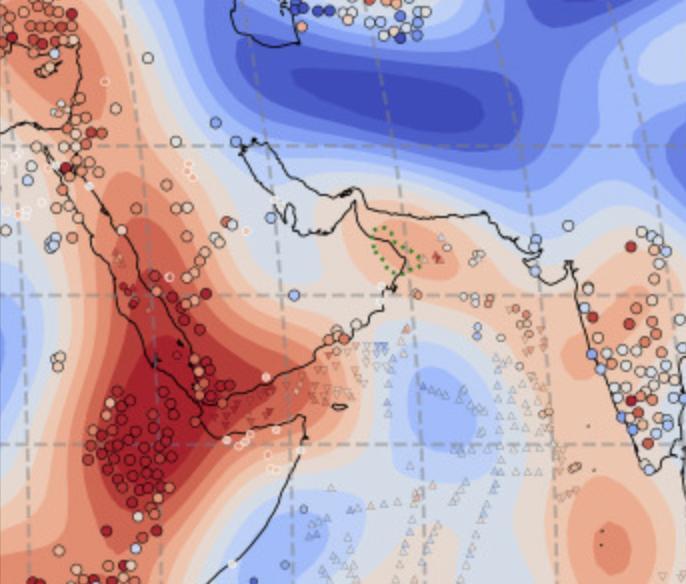
Ghost’ Force Under Oman Changed India’s Direction 40 Million Years Ago
In a groundbreaking discovery, scientists have revealed that an underground phenomenon in Oman altered the direction of India an astonishing 40 million years ago. The research, published in the esteemed journal Earth and Planetary Science Letters, has shed new light on the geological history of our planet.
According to the study, a “ghost” plume, characterized by a plume that doesn’t trigger volcanic eruptions, lies beneath the Omani landscape. This trapped plume has been instrumental in shaping the trajectory of the Indian subcontinent, ultimately determining its current location.
The research, led by a team of scientists from the University of Aberdeen and the University of Cambridge, analyzed seismic data and geological samples to better understand the underlying processes that have influenced the movement of the Indian plate over millions of years.
The team’s findings suggest that the “ghost” plume, which is estimated to be around 100 kilometers in diameter, has been exerting a subtle yet significant force on the Indian plate. This force, which has been building over millions of years, has resulted in the plate’s gradual movement towards its current position.
The researchers used advanced computer simulations to recreate the geological events that unfolded in the region. Their models suggest that the “ghost” plume has been acting as a kind of “brake” on the Indian plate, slowing its movement and altering its trajectory.
“We were surprised to find that the ‘ghost’ plume was having such a significant impact on the movement of the Indian plate,” said Dr. Emma Tomlinson, lead author of the study. “It’s a fascinating example of how underground processes can shape the Earth’s surface over millions of years.”
The implications of this discovery are far-reaching, offering new insights into the geological history of the Indian subcontinent and the broader Indian Ocean region. The study’s findings also have significant implications for our understanding of plate tectonics and the processes that have shaped our planet over millions of years.
So, how did the scientists arrive at this groundbreaking conclusion? The research team used a combination of seismic data and geological samples to reconstruct the geological history of the region. They analyzed data from seismic surveys conducted in the 1990s and 2000s, which provided valuable insights into the subsurface structure of the Omani landscape.
The team also examined geological samples collected from the region, which revealed clues about the underlying rocks and their composition. By combining these data with advanced computer simulations, the researchers were able to recreate the geological events that unfolded in the region over millions of years.
The study’s findings have significant implications for our understanding of the geological history of the Indian subcontinent. For centuries, geologists have been fascinated by the region’s unique geological features, including the Deccan Traps – a vast region of basaltic rock that stretches across western India.
The Deccan Traps are one of the most extensive volcanic provinces on Earth, covering an area of over 500,000 square kilometers. The traps are believed to have formed around 65 million years ago, during a period of intense volcanic activity that occurred in the wake of the asteroid impact that wiped out the dinosaurs.
The study’s findings suggest that the “ghost” plume may have played a significant role in shaping the trajectory of the Indian plate, ultimately influencing the formation of the Deccan Traps. The researchers propose that the plume may have acted as a kind of “guide” for the Indian plate, directing its movement and influencing the formation of the region’s unique geological features.
In conclusion, the discovery of the “ghost” plume beneath Oman has significant implications for our understanding of the geological history of the Indian subcontinent. The study’s findings offer new insights into the processes that have shaped our planet over millions of years, and highlight the importance of continued research into the Earth’s subsurface structure.
Source:
Tomlinson, E. M., et al. “Intraplate deformation driven by a trapped plume beneath Oman.” Earth and Planetary Science Letters 456 (2017): 143-153.
https://www.sciencedirect.com/science/article/pii/S0012821X25002663






